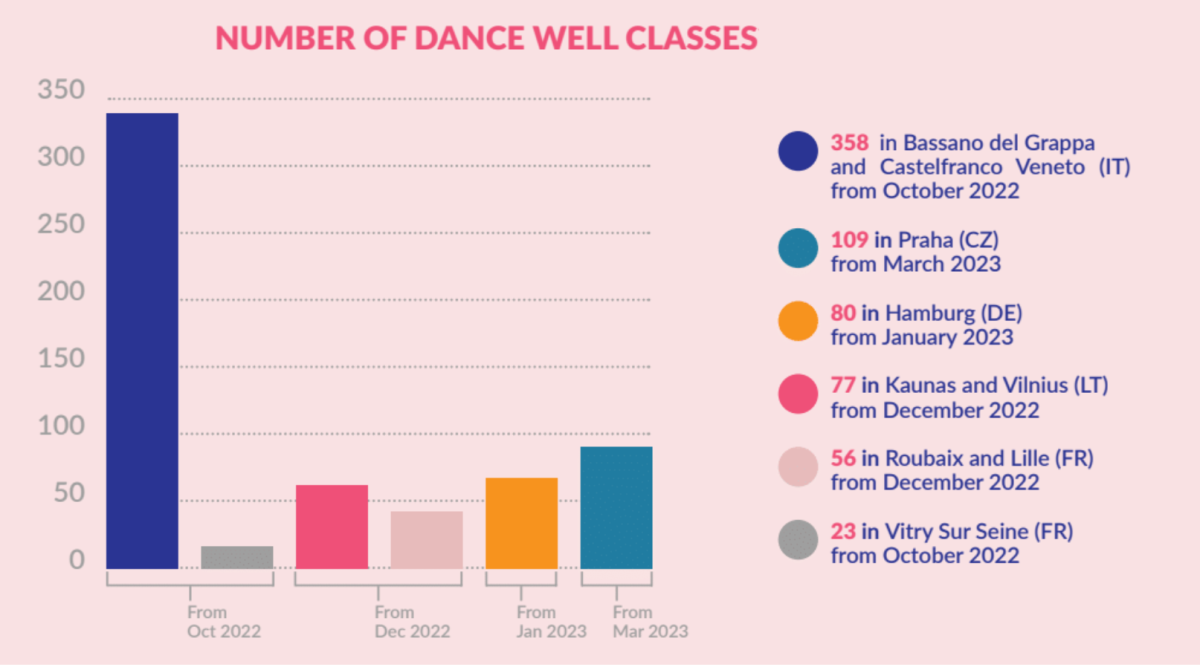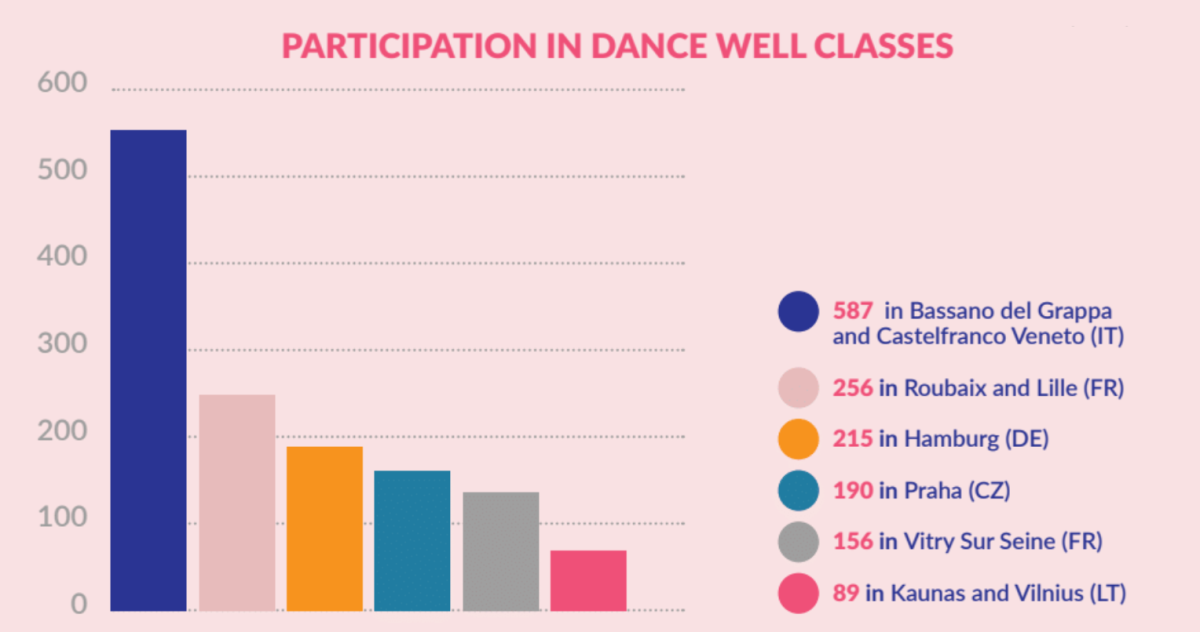“When I'm here, I forget about my symptoms and just enjoy moving. There's this playful energy in the room that makes me feel young”, says one of the Dance Well dancers from Lithuania.
“Pain had closed many doors for me, but Dance Well was the key to opening them and expressing what I had inside”, notes another dancer from Italy.
This is how some 1493 benefited dancers with Parkinson's and movement disorders describe their experience from participating in Dance Well classes.
In this original project, dance and healthcare professionals united forces to create interdisciplinary dance courses targeted to improving the symptoms and well-being of people living with motor and non-motor symptoms.
The project was initiated in 2013 by Commune di Bassano del Grappa and has globally expanded ever since, in Hong Kong and Japan. In 2022, Dance Well received EU funding from the Creative Europe program.
Although the classes were designed for people living with Parkinson's or other movement disorders, they were open to everyone, encouraging inclusion, awareness, and interaction among participants.

Apart from the 1493 benefited dancers, beneficiaries included 32 dance-teachers who received Dance Well education, while the creative outcomes of the project include 7 Dance Well creations involving 105 participants.
In numbers, between 2022 - 2025, 620 Dance Well classes were conducted to nine different localities in the five participating countries Italy, Czechia, Germany, France and Lithuania, educating 32 Dance Well teachers (Image 1).
"People come to experience possibilities, not to be told what not to do" - Giovanna Garzotto, Dance Well Teacher
The participants in the project have described improvement in their quality of life through various ways. They experienced enhanced balance and movement capabilities at the physical level and a strengthened sense of confidence, creativity, and expression at the emotional level, facilitating interpersonal relationships and combating isolation at the social level.
Roberto Casarotto, initiator of the project, states that the mission of Dance Well is “to change people's lives” for all those involved both, directly and indirectly, supporting personal, collective, and community growth.
From her perspective, Giovanna Garzotto, Dance Well teacher, explains that the idea of the dance classes enabled participants to reconnect with the possibilities of their bodies. “People come to experience possibilities, not to be told what not to do”, says Giovanna Garzotto, Dance Well Teacher.
The participants were emphatically named as dancers, highlighting the artistic aspect of the practice, as a more intriguing way to bear the fruits of the therapeutic one. Participants described “a sensation of lightness, presence, and playfulness where the body, once constrained by pain, illness, or self-doubt, finds new possibilities”.
According to the outcomes of the project, through Dance Well classes, dancers developed a relationship with dance. They were enabled to explore new ways of their body awareness, through the creative power of dance, while cultivating passion, interest, and engagement with contemporary dance.
“When I'm here, I forget about my symptoms and just enjoy moving. There's this playful energy in the room that makes me feel young.” - An anonymous Dance Well participant from Lithuania
Dancing benefited them as well in terms of individual well-being, through cultivating self-awareness, self-acceptance, self-confidence and self-esteem, supporting emotional uplift and psychological resilience and overcoming stigma.
The outcomes also highlight that through dancing together participants developed a sense of belonging in a community in motion, where diversity served as a condition, empowering trust, reciprocity, and overall social wellbeing.
The dancers' performance surprised physiotherapists, who also attended Dance Well classes. The improving results on physical symptoms were in accordance with relevant scientific literature, suggesting the positive contribution of dance to neuroplasticity, and thus, motor and non-motor symptoms, as well as to emotional, cognitive and overall well-being.
The European Journey of Dance Well
Through the collaboration of dance and healthcare professionals, doctors, researchers, and patients of Parkinson's, the Dance Well project enabled the practicing of interdisciplinary rehabilitation strategies, adding to the professional development of dance professionals and benefiting participants and local communities.
In total, 1493 dancers benefited from the project, 77% - 88% of which were females, depending on the location. Furthermore, 55% of the dancers attended more than one class, increasing to 17351 the number of attendances, while 67% of the participants attended up to four classes, demonstrating their high engagement and thus, the relevance of the project.

Additionally, the creative outcomes of the project included seven Dance Well creations, six podcast episodes, seven films, six interviews, 49 short videos, 20 newsletters, 8 dissemination events and over 30 dissemination activities (Image 2).
The lessons were free of charge and organised in cultural centres, galleries, museums, other artistic spaces, or outdoors in contact with nature. According to the organisers, this helped to further strengthen the benefits of art for the participants.
Report is available here
--
Photo credit: Dance Well









